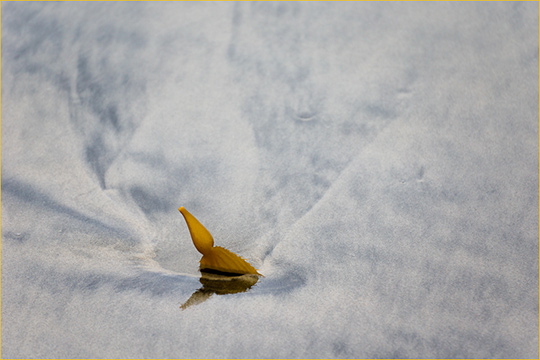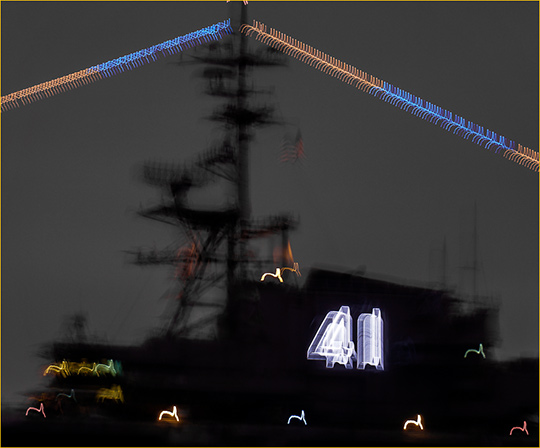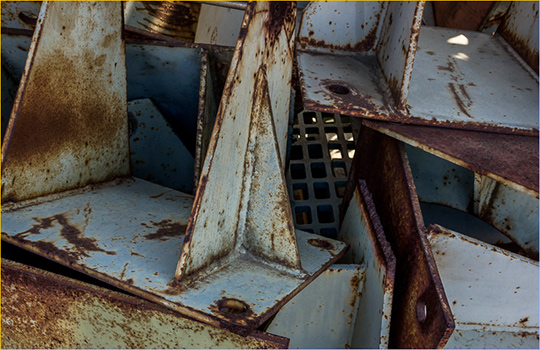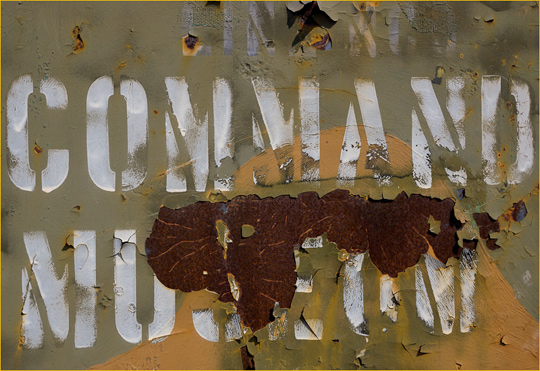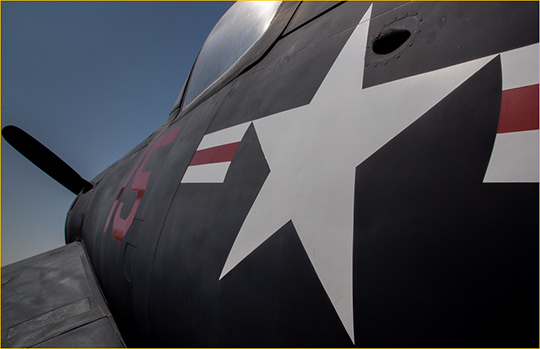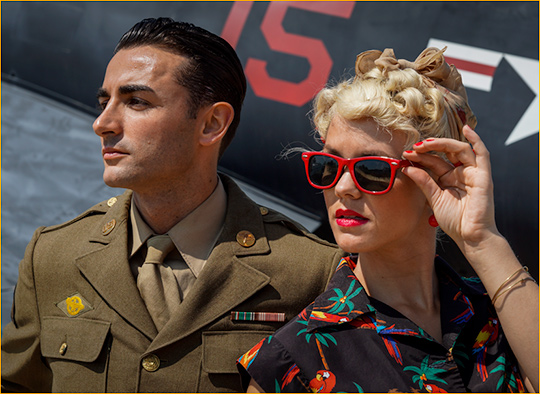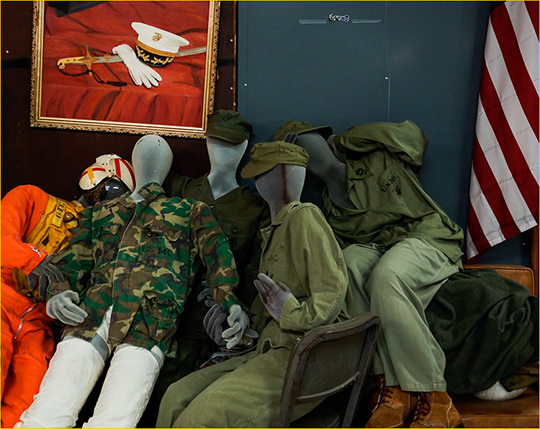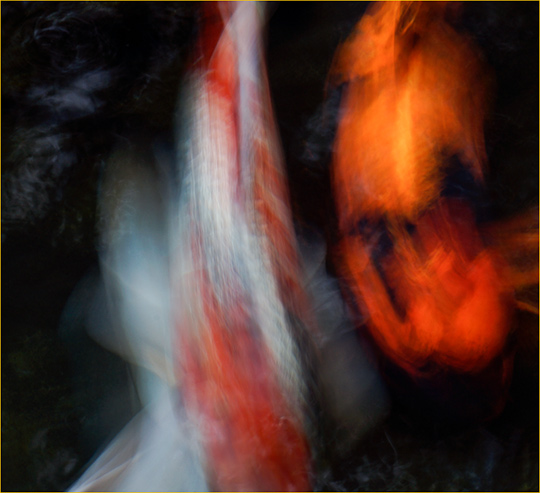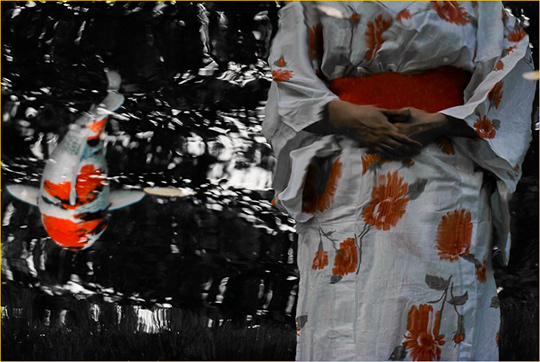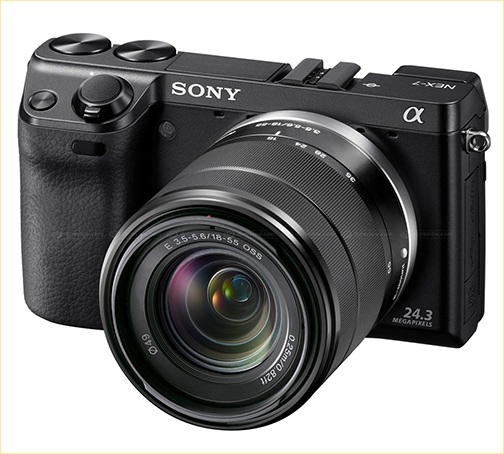
UPDATE – December 2011
We now have our “Rolling Review” of a Production NEX-7 online.
This first impressions review was conducted in mid-August at a press event which Sony held in San Diego. All of Sony’s new cameras and lenses were available for testing and use, but since I have already reported on theA65andA77I decided to concentrate on the exciting new NEX-7.
The camera that I used for this test was a pre-production sample, one of only seven such cameras in the US at the moment. It was running firmware V0.6, which was installed just before we arrived for our week visiting with Sony and testing their new camera line-up. There were a few features not yet fully operational on the camera that I had, and image quality will have another two months of tweaking before cameras become available in early November.
Here then are my thoughts and impressions of the NEX-7 after a few days of use and testing.
A Pocket Battleship
In Sand. San Diego, CA. September, 2011
Sony NEX-7 with 55-210mm f/4.5-6.3 OSS lens at ISO 200
In military terms aPocket Battleship has the guns of a battleship but the swiftness of a fleet cruiser. After several days with a pre-productionNEX-7I can say that in photographic terms this camera certainly gives the impression of a compact fighting machine that sacrifices little for its diminutive size.
When I reviewed Sony’sNEX-5 in May of last year I was taken with its clever engineering, small overall size, and image quality. But I was less than enthusiastic about the camera’s user interface. The firmware update that owners received late last year certainly helped make the camera more usable, but till now NEX cameras have provided photographers with limited operational flexibility, at least when compared to the better designed DSLRs.
The NEX-7 changes this equation – big time, with what it calls TRI-NAVI. With the addition of two programmable control dials that fall perfectly under ones thumb, a soft button under ones index finger, and a wide range of programmability for the rear panel control wheel, the NEX-7’s user interface moves up (compared to the original NEX-3 and NEX-5)to a very high level of functionality. Indeed it challenges virtually every other small camera on the market when it comes to the ability for the photographer to get the camera operating in a smooth and intuitive manner.
Features
From an operational perspective what immediately brings a grin to an experienced photographer’s face is how comfortably the camera falls to hand. It’s one of those designs that makes few demands for accommodation on the part of the photographer. And, given how small the NEX-7 is, this is quite remarkable, even for people with large hands.
From a feature perspective the NEX-7 also surprises, because so little has been left out when the camera is compared to a DSLR or other Compact System Camera (CSC). The sensor is of APS-C size. This makes it as large as the broad range of DSLRs on the market, yet in a camera body that can comfortably fit in a jacket pocket, at least when a pancake lens is attached.
At 24 Megapixels the sensor is the highest resolution of any camera other than the sensors on Sony, Canon and Nikon’s full frame cameras, and of course the NEX-7’s siblings, the A55 and A77.
The rear tiltable LCD is one of Sony’s Xtra Fine 922k screens which has among the highest resolution and contrast of any on the market. And, wonder of wonders there is also an electronic viewfinder, so one doesn’t have to shoot with the camera held at arms length, as if it was a baby with a smelly diaper. This isn’t just any old EVF though, it’s Sony’s brand-new 2.4 million picture element OLED viewfinder. As I’ll be reporting elsewhere, this is actually preferable to the small and dim optical finders that one finds on consumer grade DSLRs, and is only surpassed in viewing effectiveness by the large and bright optical viewfinders on full frame DSLRs.
I had an opportunity to compare the new Sony OLED EVF (found on the NEX-7 as well as the A65 and A77) against that of a Canon 7D. The EVF did indeed gave a larger image, and held up quite well in bright light. But, the contrast isn’t natural, and the shadows block up. In low light there is an advantage though, and indeed this EVF may be preferable to an optical viewfinder in low light situations.
Next, add to this a built-in pop-up electronic flash that doubles as a wireless trigger for external flash units, and also a lockable flash shoe for mounting external strobes and studio remotes. All of this in a body that is only slightly bigger than a NEX-5, and more compact than many CSCs that have much smaller sensors.
Carrier 41. San Diego, CA. September, 2011
Sony NEX-7 with 55-210mm f/4.5-6.3 OSS lens at ISO 200
Functions
I’m not about to write a laundry list of the NEX-7’s features and specifications. Sony does a nice job of this on their various national web sites.Here’s the onefrom theSony StyleUS web store.
Certain features stood out for me though while working with the NEX-7 for a few days, and so I’ll simply mention them here. These are not necessarily unique to the NEX-7, but nevertheless are worth a mention for those that haven’t experienced them before on another Sony camera.
Angled Iron. San Diego, CA. September, 2011
Sony NEX-7 with Zeiss 24mm f/1.8 lens at ISO 250
–Peaking: Introduced as part of a firmware update for the NEX-3 and NEX-5 last fall, the ability to show a configurable coloured shimmer effect around areas of greatest contrast in an on-screen image, makes manual focusing a breeze.
–Anti-Motion Blur and Hand-Held Twilight Modes: This is more than a gimmick. With one of these features activated the cameras can capture six seperate exposures in a fraction of a second and then merge them (JPG only, I’m afraid) to allow for faster shutter speeds and lower noise in low light situations.
–Auto HDR: For photographers who can’t be bothered doing computer-based multi-exposure HDR, the NEX-7 will do it for you. But this bring up one of the peeves that I have with the camera. While it can autobracket three frames it only can do so with a maximum of a .7EV exposure shift. This simply isn’t enough range for HDR. If at all possible I would urge Sony (and have already done so) to increase this to at least 2EV before the camera ships.
–Low Shutter Lag: Sony has reduced the shutter lag on all of its new cameras down to 0.02 seconds, including the NEX-7. This is as fast as anything else on the market and a lot faster than most.
–Fast Contrast Detection AF: Sony’s E series lenses are designed specially for contrast detection AF on NEX bodies, and though not as fast as Phase Detection using the new EA2 adaptor with Sony A mount lenses, is adequately snappy for all except very fast action applications.
–No Compromise Video: Up until now DSLR and still camera video capability has always had some form of limitation. Not with the NEX-7. It has full 1920X1080 HD video in the new AVCHD 2.0 standard, at 60P and 24P. Also, one can shoot video with full manual control of shutter speed and aperture, and of course continuous autofocus. With the EA2 lens adaptor even Phase Detection AF is available with Sony and Zeiss A mount lenses while shooting video.
–25 Point AF: This is AF capability competative with high-end cameras, and it also incorporates focus tracking and face recognition.
–Ultrasonic Dust Removal. Each time the camera is turned off the sensor is vibrated to remove any dust thay may have landed on it while changing lenses.
This is only a partial list. There’s also Sony’s uniqueSweep Panoramamode, and normal frame rates up to 2.5 FPS with continuous metering and autofocus. There is also a special high speed shooting mode of 10 frames per second, though focus and exposure for all frames are based on the first exposure in the sequence.
On the negative side of the ledger I noted that the activity light is on the bottom of the camera, next to the card and battery door. This makes sense in terms of observing when write activity is taking place so that a card isn’t removed prematurely. But, it would have been preferable to have the LED where it can be seen when the camera is in active use.
Lenses
Sony has four new E mount lenses coming this quarter; the 30mm f/3.5 Macro, 50mm f/1.8 OSS, 55-210mm f/4.5-6.3 OSS, and Zeiss Sonnar 24mm f/1.8. These join the existing 16mm f/2.8, 18-55mm and 18-200mm zooms. Not a huge line-up, but covering most of the bases.
I had an opportunity to use the new 24mm Zeiss and the 55-210mm zoom. The Zeiss is a very sweet lens, and though pricey at just under $1,000, has the build and optical quality to justify its price. The new zoom is really light weight, and though on the slow side, is a great walk-around long lens when the light is sufficient. I hope to do more rigorous testing once both lenses ship.
Command Museum. San Diego, CA. September, 2011
Sony NEX-7 with Zeiss 24mm f/1.8 lens at ISO 100
LA-EA2 Lens Adaptor
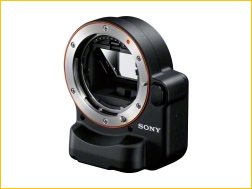
The current seven lens E mount line-up for the NEX-7 is augmented by the more than 30 Sony and Zeiss lenses in A mount that can now be used with full automation and Phase Detection autofocus using the new LA-EA2 lens adaptor. This device looks in pictures as if it will be bulky, but in fact it isn’t, and when combined with all except the largest lenses forms a relatively compact and easily handleable package.
Sony has nicely rounded the base of the unit, and it forms a quite comfortable fit with ones left hand, helping to cradle the entire lens / camera combination and adding a center weighted pivot point for the extra mass of larger A mount lenses.
Prop Star. San Diego, CA. September, 2011
Sony NEX-7 with DT 16-55mm f/2.8 lens and LE-A2 at ISO 100
The only downside with using an A mount lens along with the EA2 on the NEX-7 is that there is no image stabilization. Sony uses in-lens OSS with its E mount lenses, and its Alpha cameras use in-body image stabilization, so their lenses don’t have this capability. Put the two together and you lose any form of stabilization with the NEX-7.
Image Quality
Though it is still pre-production Sony was fine with the group of industry journalists whom they had invited taking whatever shots we wanted, without publication limitations. So, here goes an early peek at the NEX-7’s image quality. The shot below was taken at the Miramar Air Station aircraft museum, where models in period dress were also made available.
Homage to 1940. San Diego, CA. September, 2011
Sony NEX-7 with EA-2 Adaptor and Sony DT 16-50mm SST lens at ISO 100
The photograph above was shot with Sony’s new 16-50mm Alpha DT lens using their new EA-2 adaptor, which provides full Phase Detection autofocus on NEX cameras. The exposure was 1/500 sec @ f/5.6 and the focal length was 50mm. Image quality should therefore be seen as a combination of both the sensor and the lens, each of which did justice to the other. This frame is reproduced from an in-camera JPG, without any adjustments or additional sharpening.
Below is a 100% crop of the male model’s ear, intended to show skin tone reproduction as well as the system’s resolving capability and dynamic range. At this size the image would be nearly six feet wide. Another way of looking at it is that the original file, without the slight cropping that I did for aesthetic reasons, could make about a 20X30″ print without any ressing up needed.
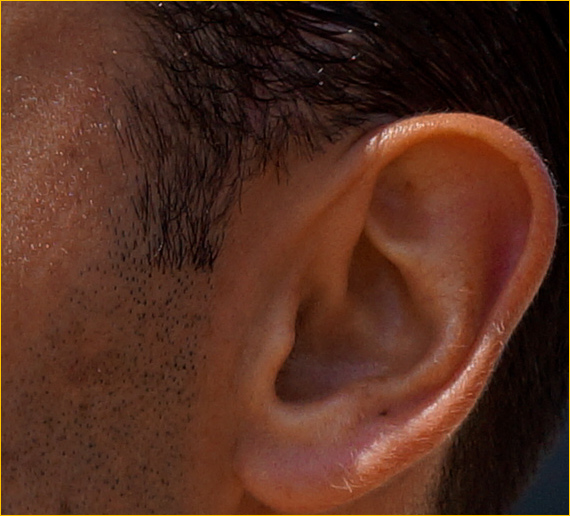
I don’t know about your experience, but I am used to the output from my 24MP Sony A900 and Zeiss glass, and this looks every bit as good, both on screen and in prints. Certainly at low to moderate ISOs the NEX-7 is neck-and-neck with Sony current Pro-grade full-frame camera, and that means that it will be comparable to the image quality of Nikon and Canon’s current full-frame cameras – at moderate ISOs, of course.
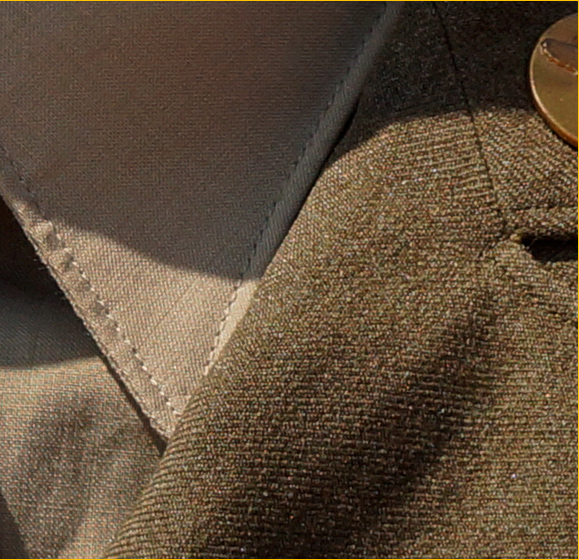
The 100% crop above shows a slight bit of colour moire. I hasten to add that this is only visible while pixel peeping, and is essentially invisible on even the largest print that one could make.
I point this out not to be critical – indeed the opposite. To me this is an indication that the NEX-7’s 24 Megapixel sensor (and the one in the A65 and A77, since they are the same) would appear to have a very week anti-aliasing filter, otherwise no moire at all would be evident. This explains the very high resolution that we are seeing from these cameras. For someone shooting fashion and fabrics for a living this may a concern, but my guess is that 99% of photographers will welcome the greater resolving power of a camera without an aggressive blurring filter.
High ISO
Survivor Huddle. San Diego, CA. September, 2011
Sony NEX-7 with Zeiss 24mm f/1.8 lens at ISO 640
Let’s get the high ISO issue on the table. As we saw in mySony A65 First Impressionsreport, this new APS-C sized 24MP sensor seems to be about a stop more noisy at high ISOs than the full-frame 24MP sensor on the A900. Some additional testing shows it to also be about one stop noisier than the 16MP sensor on the new NEX-5n.
This is to be expected with such a high pixel density on this size of sensor. Sony has some clever engineers, but their supply of magic pixey dust is limited. As a consequence the ability of this sensor to break the laws of physics should not be too highly expected.
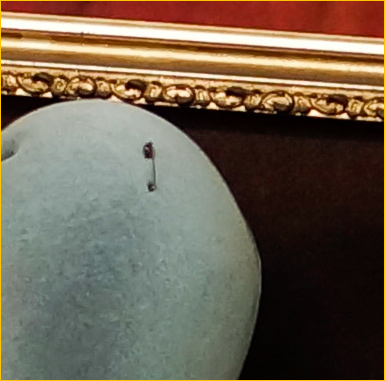
ISO 640 100% crop
But, if ones expectations are realistic this new 24MP sensor really satisfies. At ISO 100 to 400 its noise characteristics are excellent. At 800 it is still very good, and little to no additional luminance noise reduction is needed. At 1600 some luminance noise is visible at pixel peeping on-screen sizes, but hardly at all on even very large prints. At ISO 3200 and beyond noise become increasingly a factor, and how much of an issue it may be for an individual photographers needs will have to be determined.
Certainly when fast primes are used it’s hard to imagine too many low light situations where this sensor (in the NEX-7, A65 or A77) will be found problematic. But for the photographer seeking low light extremes, it may be that a camera with a low pixel count, such as the NEX-5n would be preferable, especially if large prints and strong cropping aren’t going to be needed.
24mm Zeiss vs 24mm Summilux on the NEX-7
Update:I have been told by some people that the test below may be flawed, and that the 24mm Summulux was slightly defocused because it couldn’t be that bad on-center. This is quite possible, since this wasn’t performed under controlled studio conditions, and the lens may well have become accidentally defocused during handling. I intend to repeat this test as soon as I can put this combination of gear together again. I regret any confusion this may have caused.

When it comes to image quality few lenses can surpass those made by Leica. Knowing that I would have a chance to work with the new Sony / Zeiss 24mm f/1.8 I left home with theLeica 24mm f/1.4 Summilux ($6,500) in hand so that I could do a comparison of the two on the NEX-7.
This turned out not to be much of a contest – not because either lens is a dog, but because the Zeiss is custom made for the NEX-7 and the Summilux is not. The problem lies in the fact that while a Leica M adaptor allows the lens to mount on a NEX-7 (or any NEX or Micro Four Thirds camera) the sensor on these cameras is not designed with the micro-lenses needed to properly handle the extreme off axis rays from a lens of the Summilux’s design.
Still, I was curious to see how these would compare, and so above you see the test subject, a patio restaurant at Balboa Park where we had lunch one day. I placed the NEX-7 on a stone wall, which explains why there are slight alignment differences as I changed lenses and apertures. A tripod would have been preferable, but since the shutter speeds wide open were 1/4000 sec this wasn’t a real-world issue.
Zeiss 24mm Center
Zeiss 24mm Edge
Leica 24mm Summilux Edge

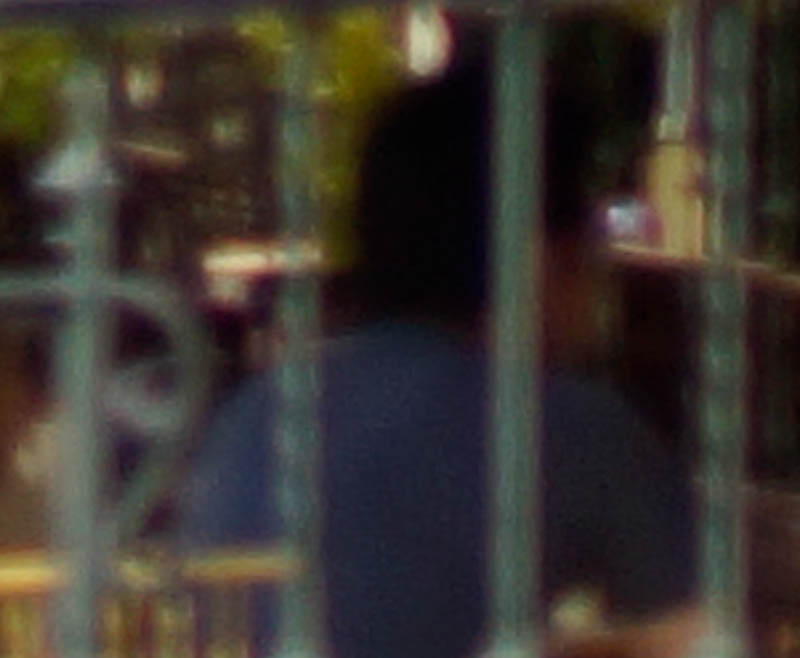


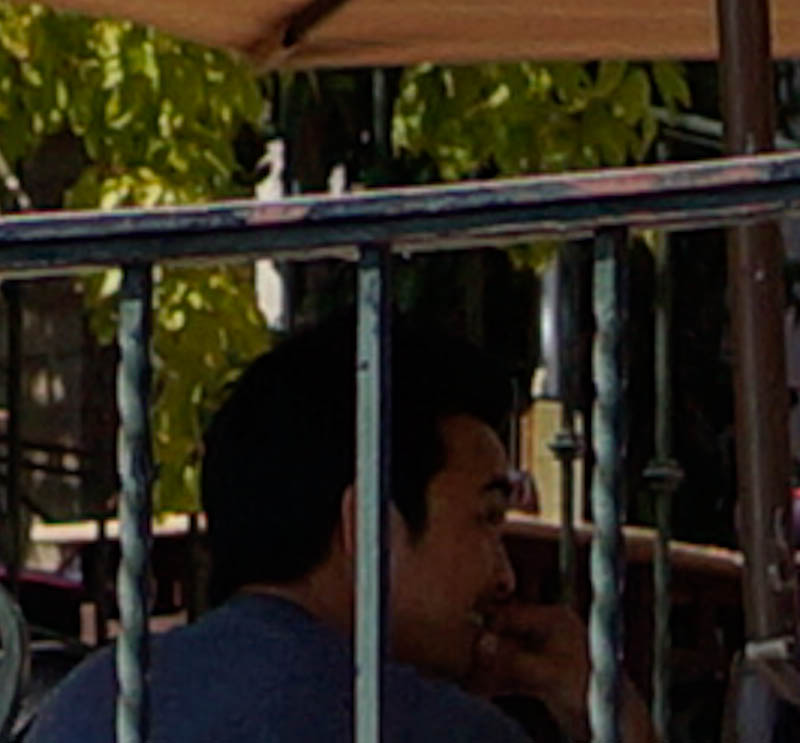
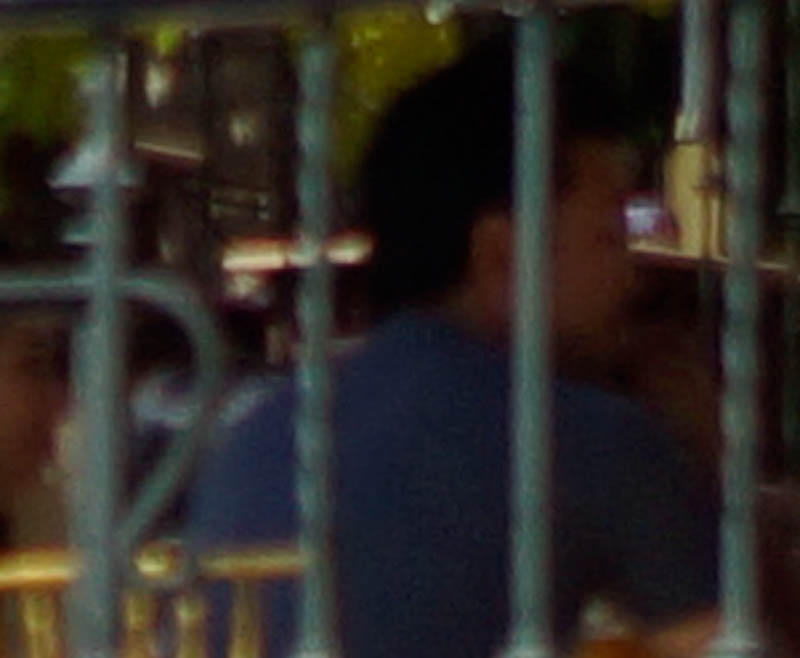


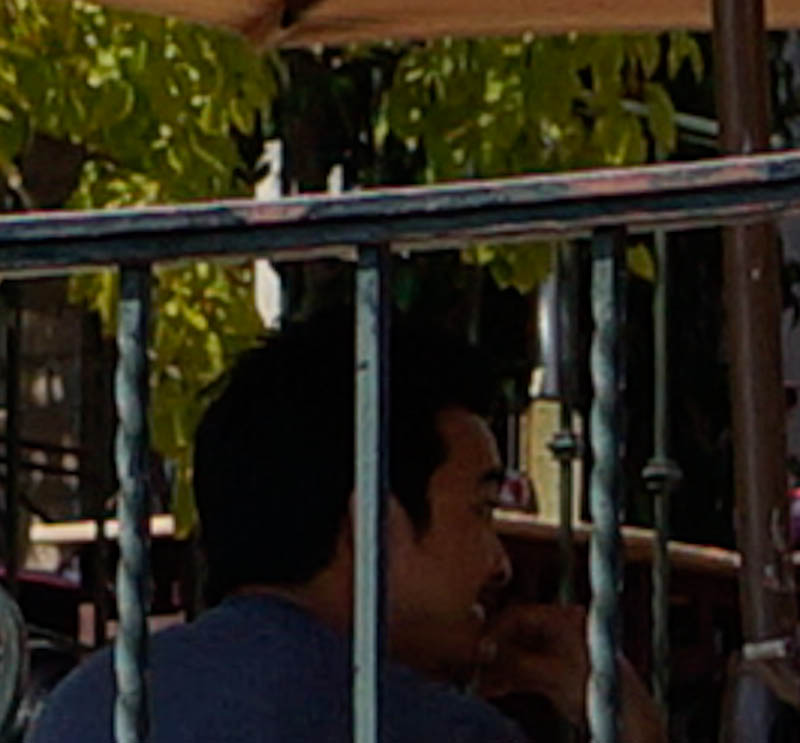
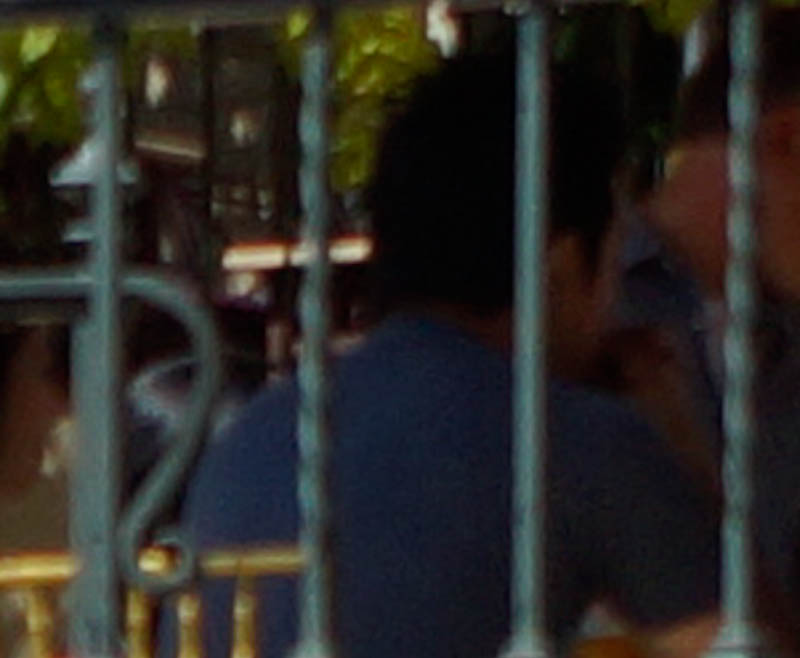


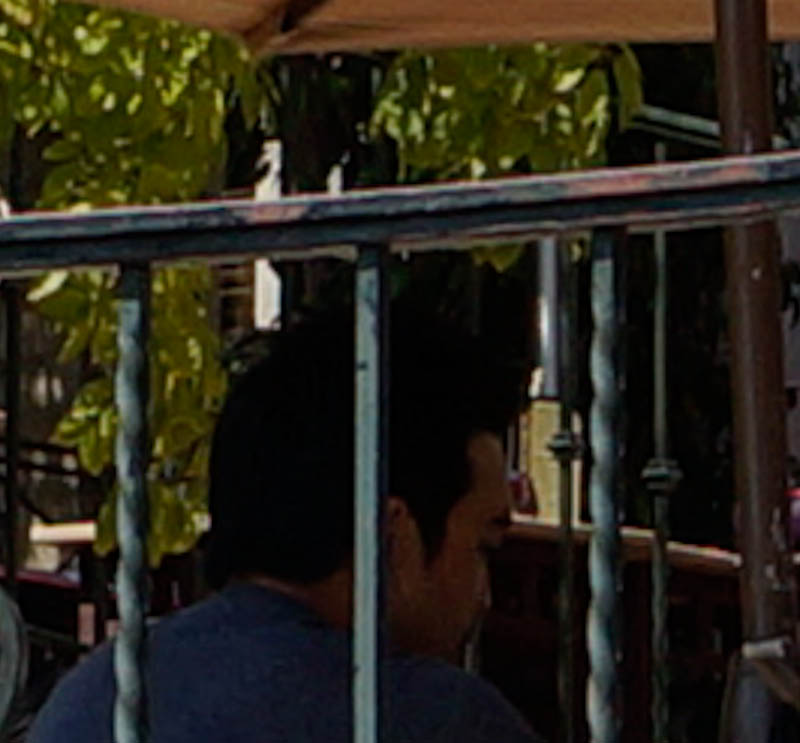
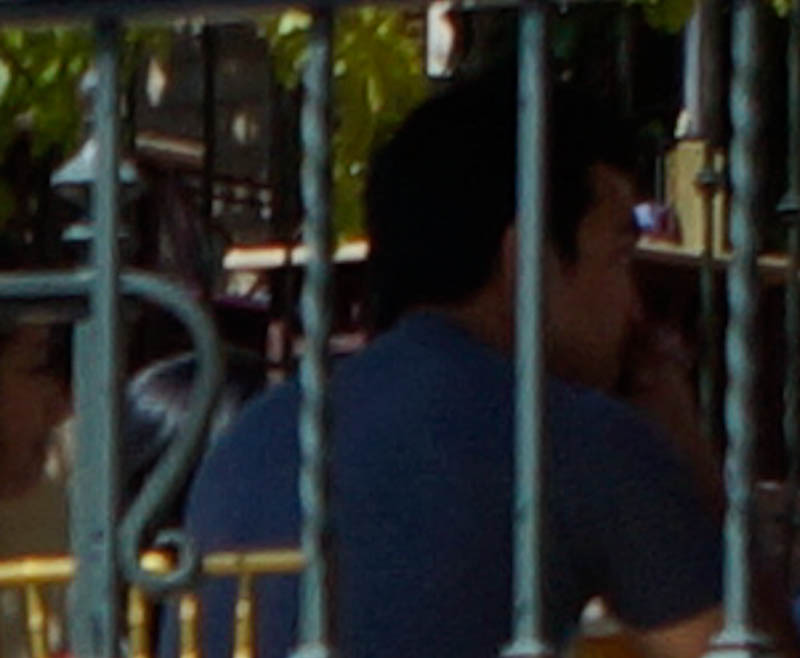


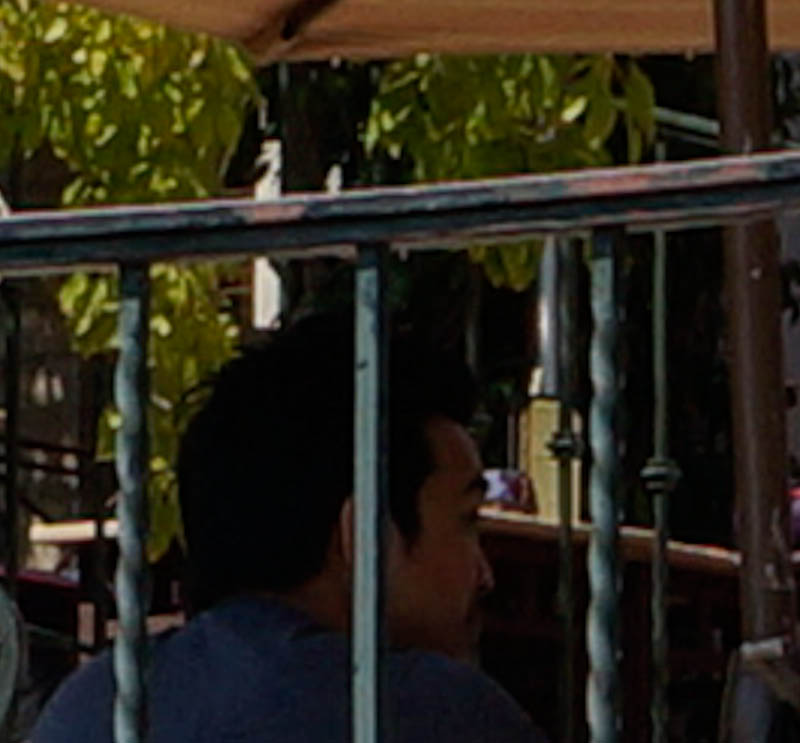
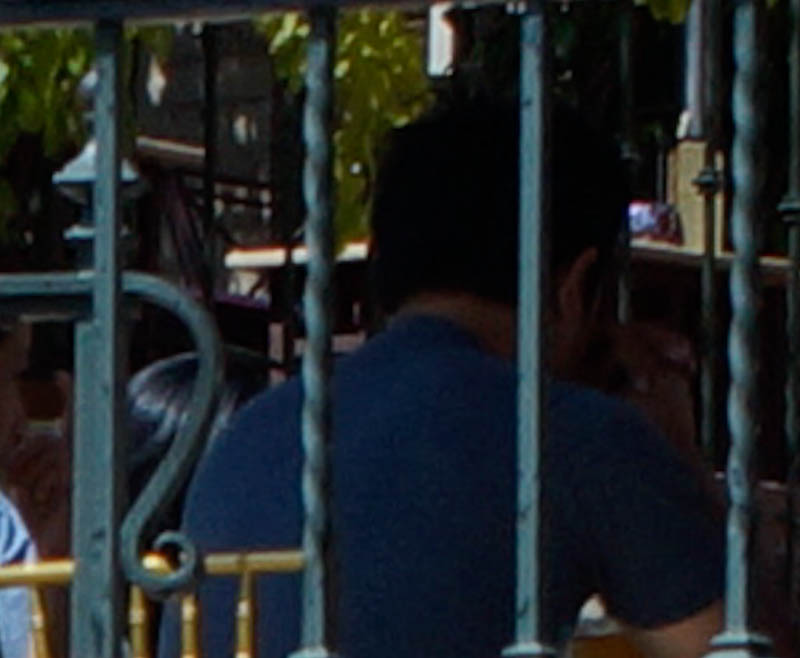


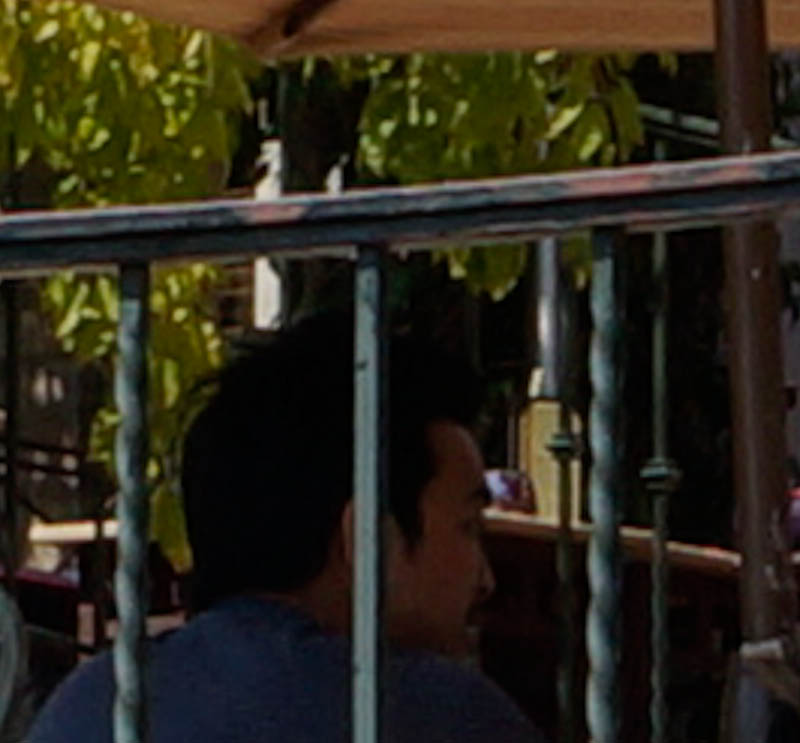
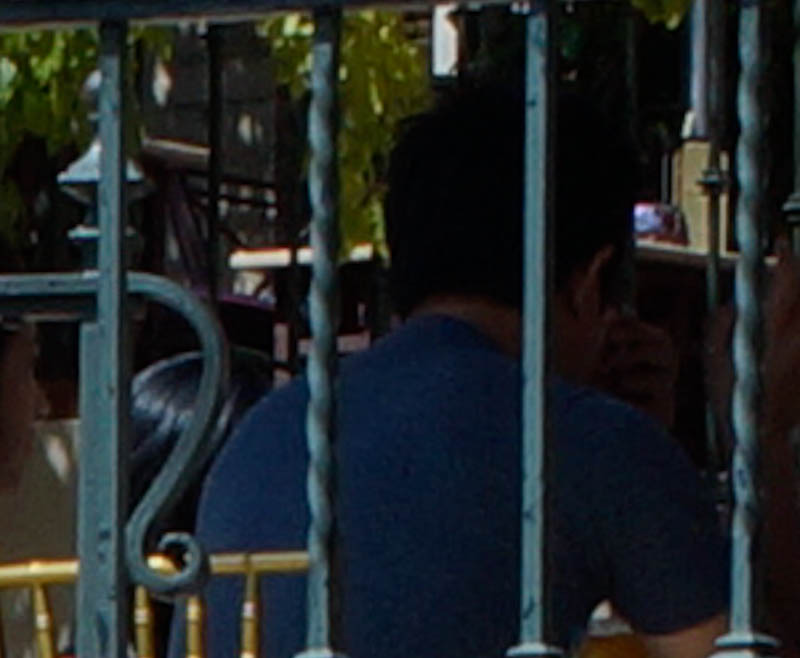


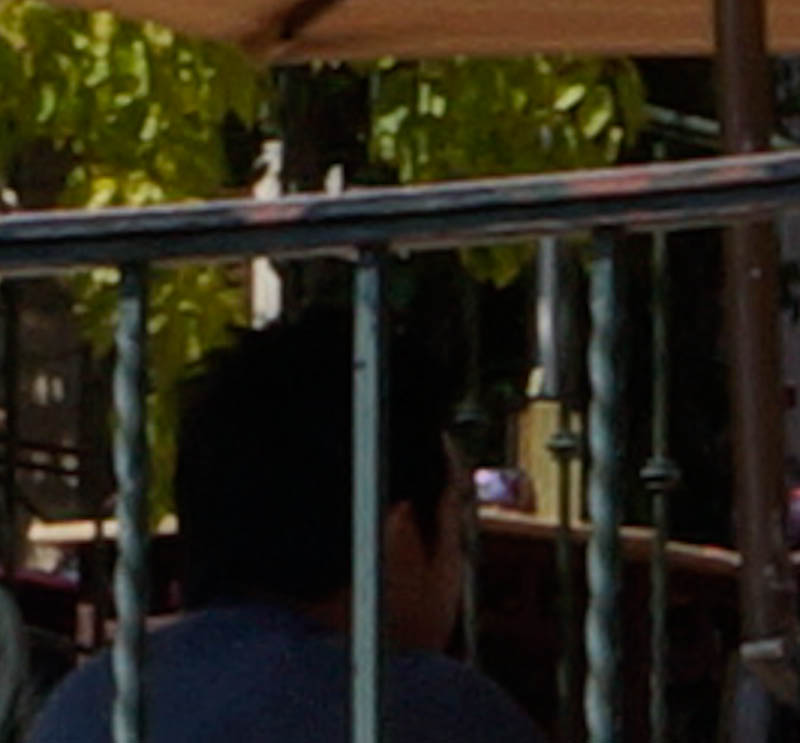
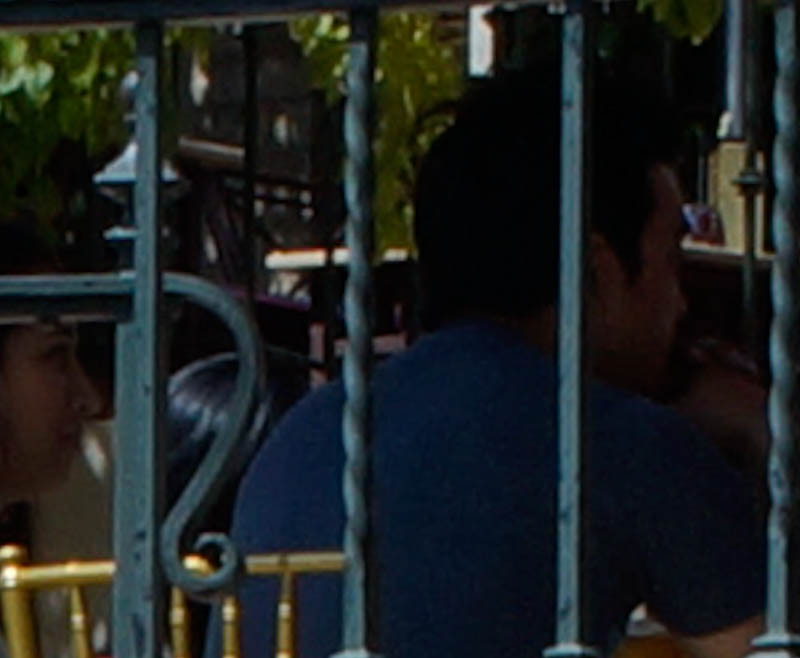


The 100% crops above tells two stories. The first is that the Zeiss 24mm is a very fine lens, with its sweet spot at f/5.6 and f/8, though performance wide open is really very fine for such a wide angle lens, especially on the corners.
The 24mm Summilux simply can’t perform properly on the NEX-7 until its stopped down to f/8 and f/11, at which point it’s comparable to the new Zeiss 24mm.
I hasten to repeat that this is not really a test of the two lenses against each other, because the NEX-7 doesn’t have the correct micro-lenses to handle Leica optics this wide. Once I have my own NEX-7 for testing I’ll report how other Leica lenses perform on this camera. I’m simply pointing out now though that if you already own some Leica, Voigtlander or other M mount lenses, you’ll need to do your own testing to see what works and what doesn’t on the NEX-7.
Parenthetically, I will be testing theRicoh GXR Mount A12for myself in a couple of weeks, and will report then on how the Summilux and other Leica lenses perform on a sensor thatdoeshave the correct micro-lens design.
Thingness
At the end of the San Diego Sony press event I shared a ride to the airport with my friend Jason Schneider. Jason was Popular Photography magazine’s Editor-in-Chief for over 15 years and prior to that was Editorial Director of Modern Photography. There are few people who are as knowledgeable about both cameras and the photographic industry as Jason.
I mention this because as we were discussing our impressions of the new product line-up we both agreed that there was something about the NEX-7 that made it very appealing as a “thing” unto itself, not just as a device for taking photographs. This is somewhat hard to describe, but is attributable to a combination of the camera’s fit, finish and design aesthetic. The only other camera of the past few years that to my mind exhibits this characteristic is the Fuji X100.
Jason and I weren’t the only journalists who at the end our week of testing in San Diego expressed our admiration not just for the NEX-7’s operational appeal and image quality, but also its attractiveness as thing. I expect you’re going to hear a lot more about this when the cameras start to arrive in consumer’s hands this November.
Being Koi. San Diego, CA. September, 2011
Sony NEX-7 with 55-210mm f/4.5-6.3 OSS lens at ISO 100
The Bottom Line – For Now
The NEX-7 truly appears to be the photographic equivalent of aPocket Battleship. It’s small and light enough to be carried all day in one hand, yet has the image quality capabilities of a much larger camera. With its very bright and high resolution electronic viewfinder it surpasses the eye level viewing of most APS-C DSLRs, with their small tunnel-vision viewpoints – though as mentioned, shadows do block up in the viewfinder in high contrast situations.
When it comes to video, the NEX-7 has it all, including full HD 1080P at 60 fps, and 24fps for aspiring film makers. I decided to concentrate on the camera’s stills capability for this test, but will report on video when I receive another test sample, or once cameras start shipping.
The availability of the new EA2 lens adaptor means that Sony and Zeiss “A” mount glass is available for use with full high-speed Phase Detection autofocus. Of course because of the NEX’s short back focus, with a third-party lens adaptor just about any other lens can be mounted, including Leica M lenses, (see above).
Add to this a built-in flash, hot shoe, electronic level, and full-featured user interface, not to mention the usual fun Sony gizmos such as Sweep Panorama, Twilight Mode and so on.
Note that the hot shoe is Sony’s proprietary design, having the advantage that it locks, but the disadvantage that if you want to mount something like a third party flash, a flash trigger, or an optical viewfinder, you’ll need to use a shoe mount adaptor.
One really has to ask –what’s not to like? At under US $1,200 for a 24MP camera, even the price is attractive. I predict that the NEX-7 will be one of the hottest cameras of the coming year, and is going to really put other camera maker’s feet to the fire when it comes to offering an attractive mix of image quality, features, size, build quality and price. Sony clearly made a decision to make the NEX-7 as full featured as possible, not holding back any of their available features or technology. With many camera makers creating market segmentation by artificially restricting features to certain price points, Sony is to be commended for pulling out all the stops for the NEX-7 and keeping the price as reasonable as it did given the camera’s wide ranging features and capabilities.
Sony has always been a strong competitor in any market that it chooses to enter. Relatively speaking Sony is the new kid on the block, and the photographic market is about to feel the full force of their participation. The major players are going to have to up their game if they want to hold on to their market share, because if Sony’s latest offerings are any indication the camera marketplace is about to get a whole lot more competitive in the months and years ahead.
Koi and Geisha. San Diego, CA. September, 2011
Sony NEX-7 with 55-210mm f/4.5-6.3 OSS lens at ISO 100
Postscript
As I proofread this article prior to publication I realized that it sounds like a bit of suck-jobon Sony and its latest offering. Had their hospitality in San Diego during the press event (and it was pretty terrific) clouded my judgement?
I hope not. But, as I searched my notes for something negative to write I found precious few entries in the minus column. The only one of any consequence is the lack of flexibility in the EV bracketing range, and hopefully this can be fixed prior to V1.0 firmware release. I’m going to have to wait until I get my hands on a full production camera though to really take it to task. If there are things to criticise then, believe me, I’ll find them. In the meantime though I’m in a honeymoon frame of mind towards the NEX-7.
Of course I have already placed my own pre-order for a NEX-7 from a local dealer. Deliveries start in early November.
September, 2011
UPDATE – December 2011
We now have our “Rolling Review” of a Production NEX-7 online.
